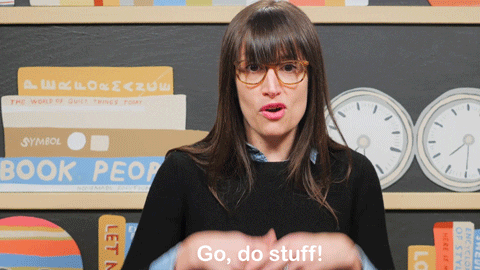How To Apply The Circle Of Learning
CLXs are the ultimate vehicle for integrating working and the Circle of Learning.
In my previous letters, we explored the layers of the Circle of Learning.
The #1 question I get: how can I implement this for my team?
That’s what we’ll explore this week.
How To Apply The Circle Of Learning In The Workplace
To facilitate the flywheel of learning by doing, reflecting, sharing, and teaching, we help our clients create Cohort Learning Experiences (CLXs).
Simulations Suck
Let me start by saying we are strongly opposed to simulations. The best way to learn by doing is when something is at stake. Let's face it, no one is perfect. There is no such thing as a perfect sales call or a perfect team meeting or a perfect leadership address. Perfection is the enemy of progress.
The best way to learn is to take action in real-world situations that have consequences, reflect on the outcome of those actions, and move forward with a clear idea of what to do differently next time.
Learn In Sprints
A Cohort Learning Experience is made up of a series of sprints, each one covering a different topic or theme that is relevant to the overall skillset needed to perform a job.
Each sprint has three components:
Asynchronous content.
Live sessions.
Action and reflection.
Here's how they work.
Asynchronous Content
People receive access to content (think podcasts, YouTube videos, articles, TED Talks, or e-learning) for them to consume in their own time.
Purpose of the content: introduce new mental models and frameworks for looking at current challenges.
That's it. There is no requirement to memorize any of the models or frameworks but merely to use them to analyze your current situation.
Then people reflect on their current situation through the lens of the new models and frameworks they were introduced to.
Purpose of the reflection: participants create a mini-case study that describes the specific challenges, questions, or roadblocks that are holding them back from making progress.
These case studies become the scenarios that are discussed in live sessions. No outside consultants could ever create realistic scenarios that come close to matching the actual scenarios people are experiencing right now.
💡 Top Tip - create workbooks with specific prompts for reflection to give participants an organized space to collect their thoughts.
Live Sessions
Next, people engage in dialogue about their scenarios during a 60-90 minute live session. These can be virtual or in-person.
It’s one thing to reflect on your own experiences and draw conclusions.
It’s another thing entirely to talk through your reflections with someone else. You’re forced to clarify your thinking and you benefit from constant feedback to measure your reflections against.
With the help of skilled facilitators, participants use live sessions to dissect, analyze, diagnose, and problem-solve the specific scenarios each of them has brought to discuss.
This is more scalable than you think because most challenges or scenarios can be generalized enough to still be valuable to a large number of people. So even if only one participant gets to discuss their specific case study, there’s a strong chance that almost everyone else has experienced a similar challenge in the past or will in the future. Being part of the discussion to diagnose the problem and brainstorm solutions is valuable for everyone participating.
💡 Top Tip - use breakout rooms to create small group scenarios ideal for more intimate discussions (but remember to do whole group debriefs to spread the learning!).
Action and Reflection
Finally, people leave the live sessions committed to taking a specific action to make progress in their work. These actions result from judgments or decisions that would otherwise not have been reached by an individual acting alone. They reflect the collective intelligence of the entire group.
Taking new action restarts the cycle of reflecting on outcomes, identifying what can be improved the next time, and taking new action.
💡 Top Tip - create an asynchronous chat space (e.g. a Slack or Teams channel) for cohorts to keep in touch after live sessions to share their reflections on the actions they’re taking.
Ultimate Learning Machines
CLXs help people fully integrate working and learning. Participants bring questions and leave with answers. There is no gap between comprehension and committed action. The cycle becomes a habit, leading to accelerated progress.
Done right, smart companies are able to surface general best practices for dealing with common challenges and document them— preserving the collective intelligence of its people for the future benefit of anyone who will fill that role in the future.
Smart companies end up empowering their people to write their own playbooks, making execution so much easier for everyone else to come.
That’s how smart companies become Ultimate Learning Machines.








